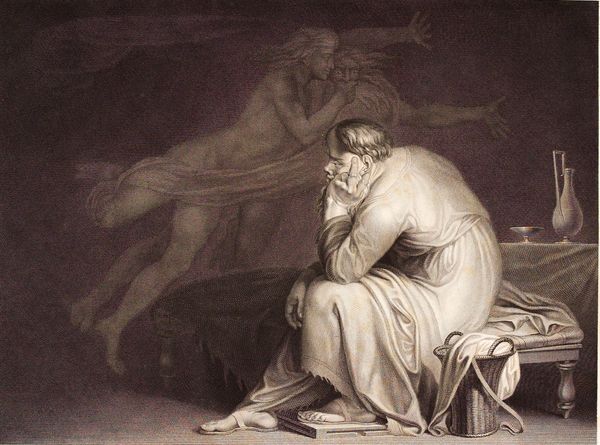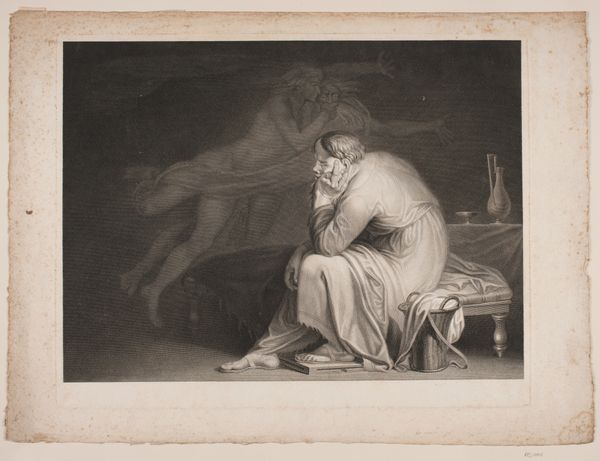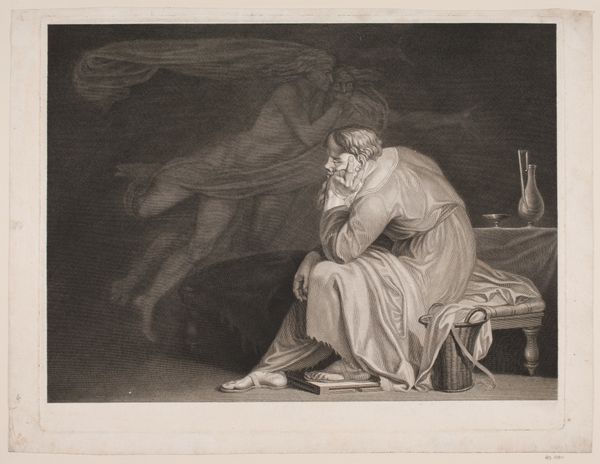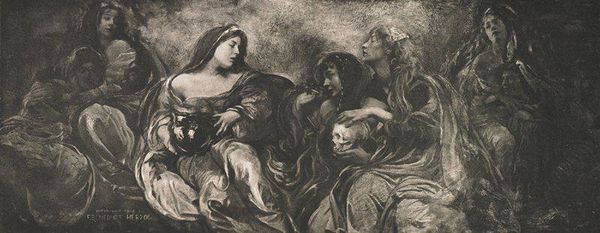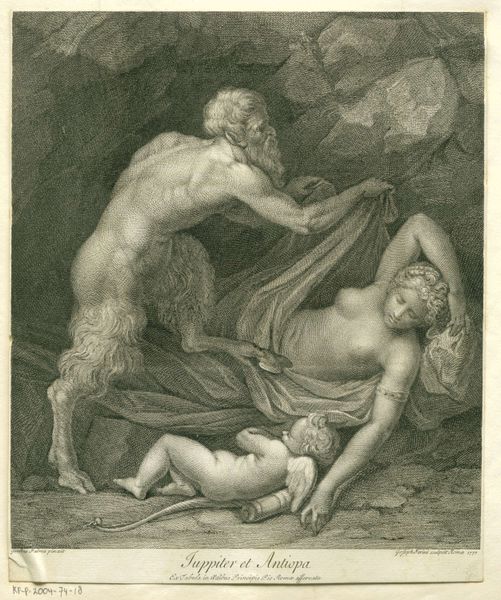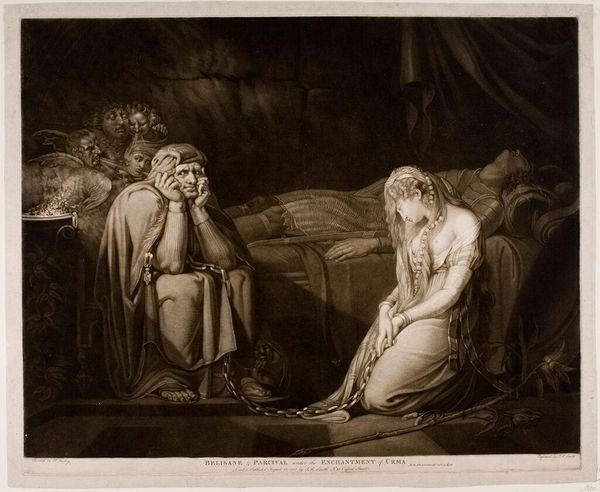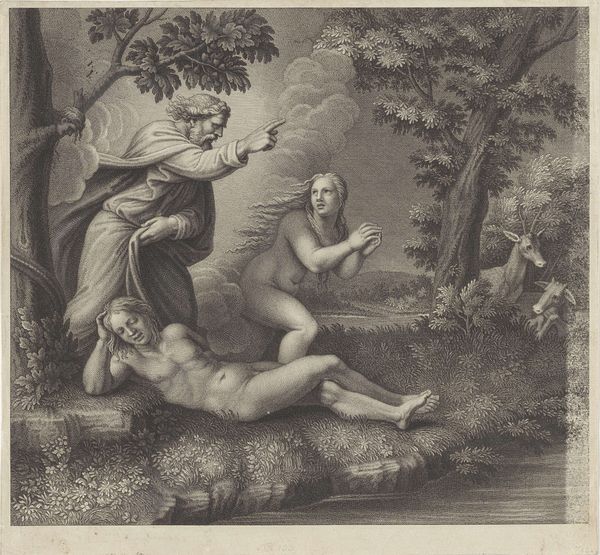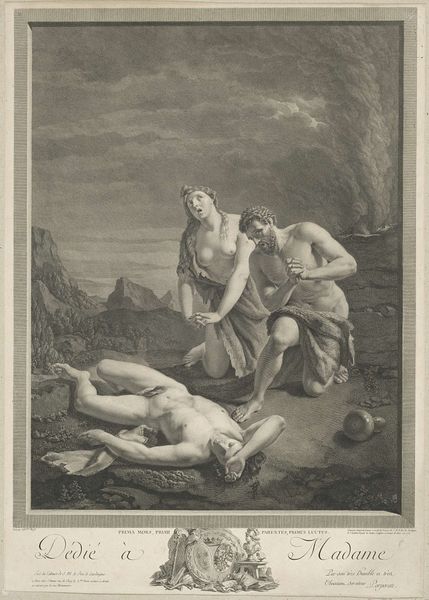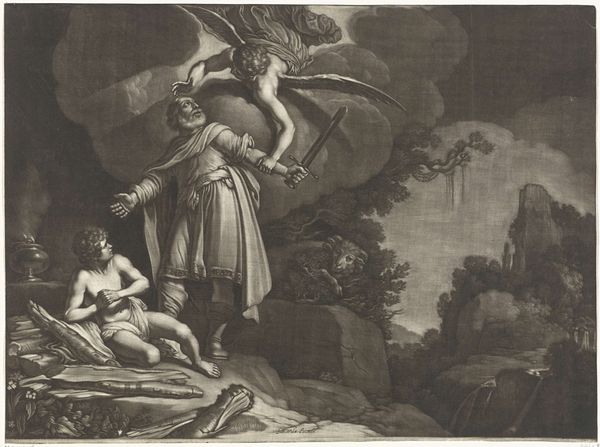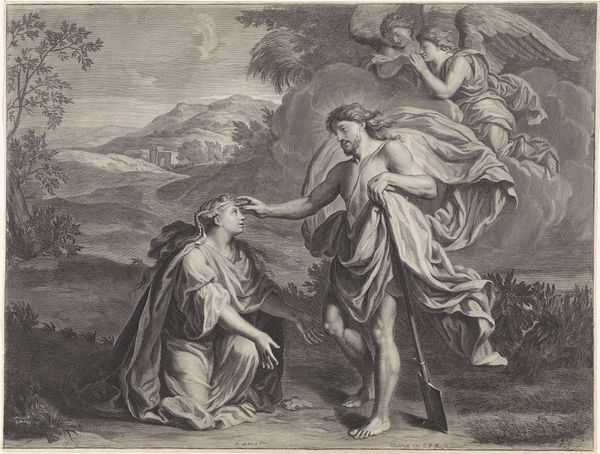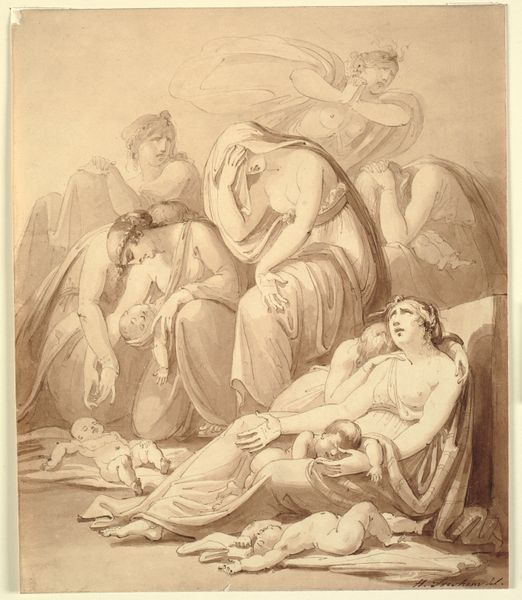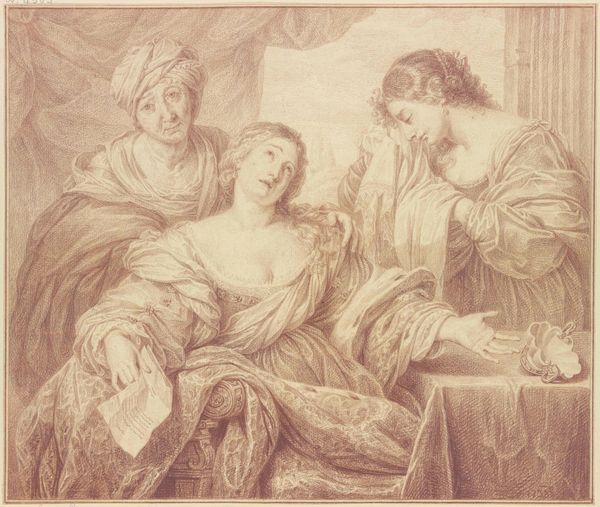
print, engraving
#
portrait
#
neoclacissism
#
narrative-art
# print
#
19th century
#
history-painting
#
engraving
Dimensions: 413 mm (height) x 543 mm (width) (bladmaal)
Editor: So, this print is called "Sokrates," made by J.F. Clemens in 1786. It's quite striking—almost theatrical—in its use of light and shadow. There’s this very solid, almost slumped figure of Socrates, but behind him, these ethereal figures. How do you interpret the symbolism in this work? Curator: The emotional weight of this piece lies precisely in the contrast between the corporeal and the spectral. Socrates is physically present, yet seemingly haunted or inspired by ideas that take the form of these ghostly figures. What do these figures represent, would you say? Are they simply figments of his imagination, or do they carry a more significant cultural charge? Editor: Perhaps they represent his daimon—his inner voice? Curator: Precisely! That’s an excellent reading. The daimon was Socrates’ constant companion, his source of ethical and moral guidance, manifested as inner promptings. Consider, too, how Clemens renders them in this Neoclassical style. It consciously echoes the artistic ideals of ancient Greece—an attempt to visually connect with a specific historical narrative, grounding the intellectual in something tangible. Are there visual cues, would you say, that establish Socrates as a figure separate from those around him, yet reliant on their ethereal presences? Editor: Well, his dress and position definitely suggest he is of importance and is alone; even more obvious given the other two individuals are floating behind him and nearly transparent. They almost seem to guide him, so I imagine he cannot ignore the symbols that represent the voice in his head. Curator: He’s isolated, yes, and framed against this nebulous presence that fuels his internal debates. This interplay highlights the struggle between the individual and the transcendent—a core theme of Socrates’ philosophy and therefore depicted via the work's symbolism. This image isn’t simply a portrait; it is a dramatization of internal and intellectual struggle. Do you feel the visual tension helps to connect the man and the idea in a complementary dance, so to speak? Editor: Definitely! I didn’t consider the deeper symbolism initially. Seeing the figures as representations of inner thought makes it far more compelling than just a historical portrait. Curator: And that’s where images truly speak. They connect us not just to historical figures, but to their internal lives, visualized through a language of enduring symbols.
Comments
No comments
Be the first to comment and join the conversation on the ultimate creative platform.
